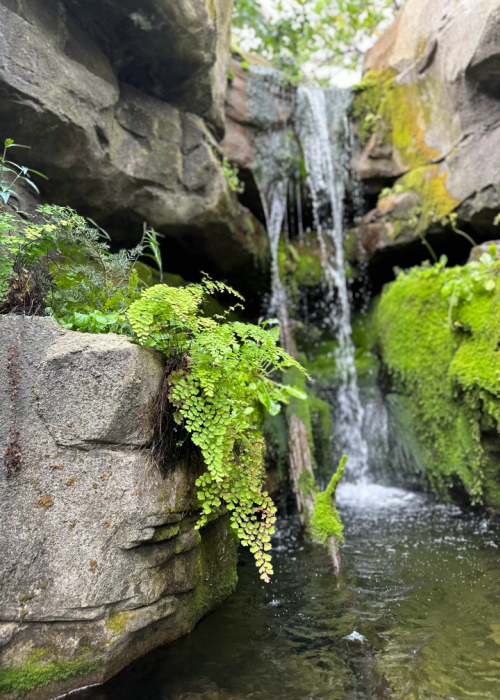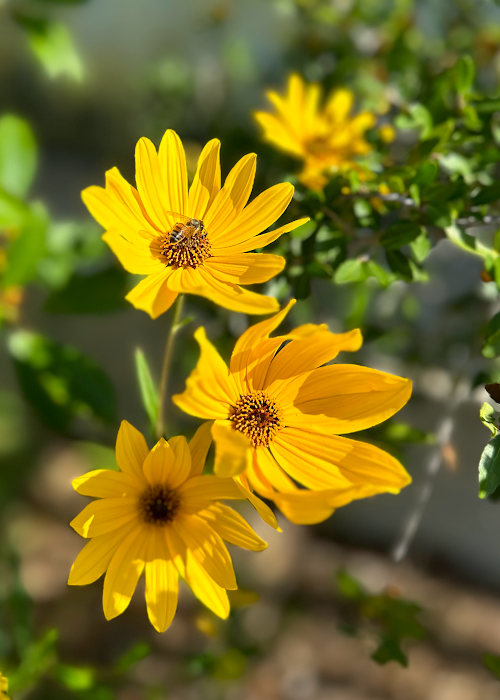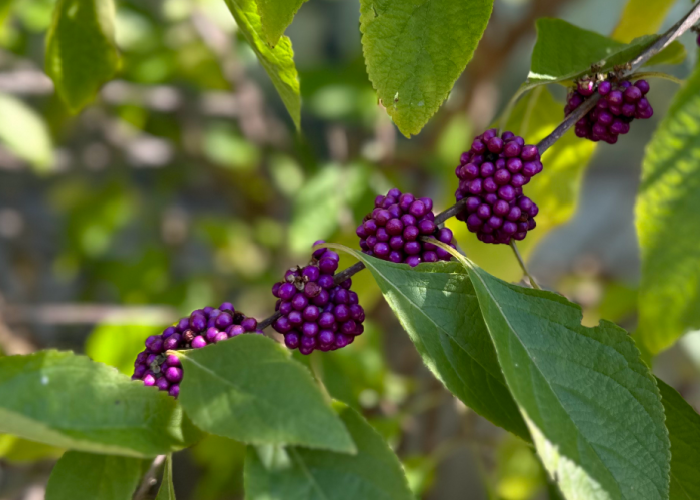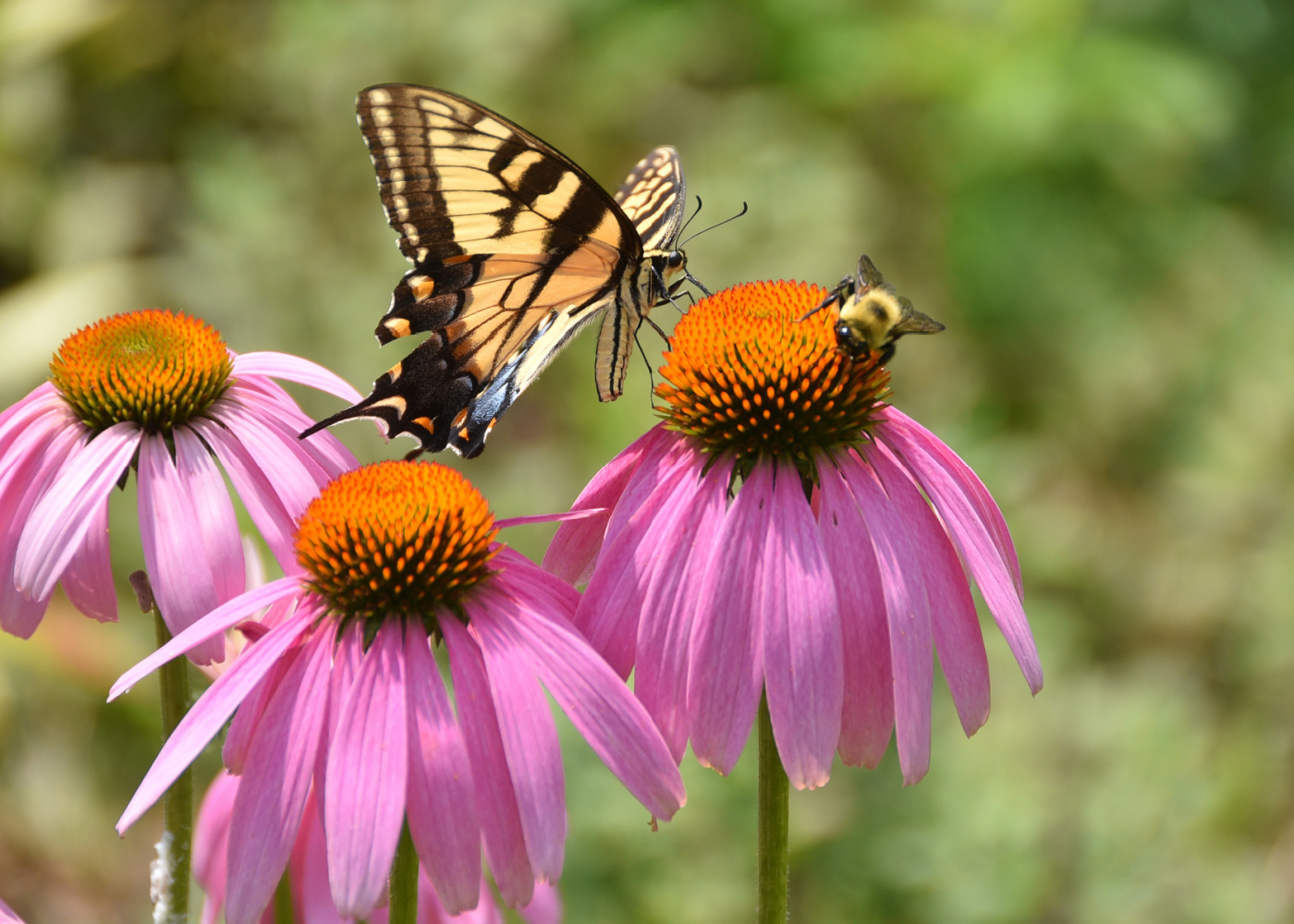South Carolina has no shortage of eye-catching and fragrant native plants to enjoy when you’re strolling through downtown Charleston, enjoying a day on the beach or hiking in the Upstate. But did you know these native plants combat climate change, lessen the pollution of our waterways and can be used in your own backyard for a biodiverse ecosystem that’s easy to care for? Learn how the Aquarium cultivates native plants in our exhibits and how you can apply similar knowledge to plant climate-friendly foliage at home from our very own horticulturist, Javari Chas!
Be-leaf Us
Sure, the animals are often the main focus in exhibits, but have you ever stopped to admire the habitats that surround them? If you look closely, you’ll notice the moss and ferns that blanket the Mountain Forest, the live palmetto trees that decorate the Saltmarsh Aviary or the nibbled-on cacti that live with the gopher tortoise and indigo snakes. These are all native South Carolina plants that are managed and cared for by our horticulturist, Javari.
Among many other duties, Javari oversees the daily care and aesthetics of all plant displays in the Aquarium. Javari works closely with each biologist and our exhibits team to incorporate native plants that are specialized for each exhibit to create the most natural and comfortable environment for every species.
 Ferns and moss thrive in the cool spray of the waterfalls.
Ferns and moss thrive in the cool spray of the waterfalls. “Displaying native plants in our exhibits not only creates a comfortable environment for our animal species, but inspires native plant education and the conservation of our natural world,” Javari says. Just as native plants help maintain a safe and comfortable habitat for native species in the Aquarium, they can do the same for species in our own backyards, too.
Branching Out
Thanks to their fragrant blooms and long growing seasons, planting native flora at home supports native pollinators, like bees and butterflies! They create a lush habitat for these pollinators and other critters, encouraging biodiversity in our neighborhoods and giving the birds, bees and more a safe place to live year-round.
Even if you don’t think you have a “green thumb,” native plants are actually pretty resilient and easy to care for! Unlike non-native species of plants, native ones are far more disease-resistant, minimizing the need for pesticide use. Since these plants evolved to thrive in our region already, they also need significantly less watering than non-native species and are less sensitive to the sun and heat (which is a plus with how hot and humid it gets here in the Lowcountry)!
 Pollinators are attracted to brightly colored blooms, like on this swamp sunflower.
Pollinators are attracted to brightly colored blooms, like on this swamp sunflower.Rooting for the Environment
Speaking of heat and humidity, it is no secret that we are intimately familiar with changing climate patterns throughout the state of South Carolina. While native plants create a lush and biodiverse habitat for our local species, they also help combat climate change. “Native plants promote soil retention, minimize pollution runoff (due to less of a need for pesticides), improve biodiversity naturally and require much less water and care since they are adapted to local climates and conditions,” Javari explains.
Ex-seeding Expectations
Are you feeling inspired to create a lush landscape of native plants at home? Here’s a few beautiful and easy-to-care-for native plants Javari recommends:
- Purple coneflower (Echinacea purpurea)
- Sweetgrass (Hierochloe ordorata)
- Oakleaf hydrangea (Hydrangea quercifolia)
- Beautyberry (Callicarpa)
- Carolina jessamine (Gelsemium sempervirens)
 We have beautyberry bushes planted in front of the Aquarium!
We have beautyberry bushes planted in front of the Aquarium!Fragrant scents, bright colors and low-maintenance care are great reasons to cultivate a lush landscape populated with native plants. Watching pollinators flutter by and knowing you’re contributing to native habitat conservation are pretty sweet benefits, too!
On your next visit to the Aquarium, take a closer look at the wide variety of plants we care for, and take a moment to relish in their beauty.
Published November 1, 2023


